Coronavirus Today: Door-to-door vaccine delivery
- Share via
Good evening. I’m Thuc Nhi Nguyen, and it’s Friday, Feb. 19. Here’s the latest on what’s happening with the coronavirus, plus ways to spend your weekend and a look at some of the week’s best stories.
By Dr. Christine Ritchie’s estimate, about 2 million people in the United States are homebound, and an additional 5 million have trouble leaving home or need help doing so.
Yet those millions of people “tend to be sort of invisible to society,” said Ritchie, a professor at Harvard Medical School.
They can’t drive through mass vaccination sites or stand in line outside clinics. Even if they secure a coveted appointment spot, they can’t leave their house to get there.
Now there are doctors and nurses racing against traffic, inclement weather and a ticking clock to get to them.
Healthcare workers specializing in home care are delivering COVID-19 vaccines to homebound patients in cities such as Boston and New York. It can be a complicated process: Many homebound people don’t receive regular medical care, which makes it hard to identify who needs a vaccine.
After administering a dose, healthcare workers have to observe the patient for 15 minutes in case of allergic reaction. With the waiting period and having to drive to the next patient, doctors try to organize appointments with neighboring patients to save time. That’s crucial because the vaccines will expire within hours of being drawn into syringes.
Dr. Won Lee estimates she can deliver five or six doses a day. She recently met with 106-year-old Domingas Pina, who hasn’t left her home in about a year. After receiving the shot, Pina smiled and flashed a thumbs up. “She misses all her grandchildren and her friends that used to come all the time,” her daughter Maria Lopes said. “We don’t want to lose her.”
In Los Angeles, to boost access to COVID-19 vaccines, the city is expanding its mobile vaccination program. It hopes to deploy 10 vehicles by the end of March to serve high-density, low-income communities. The mobile clinics have already traveled to South and East Los Angeles and administered more than 4,200 shots since Feb. 2. With adequate supply, the program can expand further, the city said.
“We’re seeing still disproportionately low vaccination rates among many of our Black and Latino populations and communities, a reflection not only of historic distrust and community trauma, but also the structural barriers that stand between too many Angelenos and their access to vaccines,” Mayor Eric Garcetti said Thursday. “We need to tear those barriers down.”
New L.A. County health data released Friday underscore the seriousness of those disparities in vaccine access. Although the COVID-19 vaccination rate for the county’s seniors has risen dramatically in the past 10 days, Latino and Black residents are still getting shots at a significantly lower level than whites and Asian Americans, the data show.
Nearly 25% of Black residents age 65 and over have received at least one dose, an 18-point jump from Feb. 9, and Latino seniors receiving the shot reached 29%, up 14 percentage points. By contrast, 42.8% of white senior residents have received at least one shot, as have 39.4% of Asian Americans, the data show.
Meanwhile, supply problems have forced L.A. to postpone more vaccine appointments scheduled for Saturday after severe weather around the country delayed vaccine shipments. Officials had already pushed back 12,500 appointments scheduled Friday. Appointments will be automatically rescheduled and notifications will be sent via text, email or phone. Those waiting for their second dose will “still get it within the time period recommended” by federal health officials, Garcetti said.
The delays affect the large-scale vaccination sites run by the city, but as of Thursday afternoon, centers run by L.A. County were not affected.
Despite continued shortages, teachers can look forward to some priority access soon. Gov. Gavin Newsom announced Friday that 10% of California’s weekly allotment of COVID-19 vaccine doses will be set aside for educators starting next month. Based on current vaccine allocations from the federal government, that will result in about 75,000 doses of COVID-19 vaccine for school employees.
With conditions improving across the state, Friday brought some long-awaited good news for youth sports: The California Department of Public Health’s new guidelines offer a way for high school football and water polo teams to return to practice as soon as Feb. 26.
High-contact outdoor sports like football, field hockey, rugby and water polo can be played in counties that have 14 or fewer new coronavirus infections per 100,000 people. L.A. County, with a case rate of 17.6 per 100,000, is not yet eligible.
Most high school sports teams haven’t suited up since last March, when the pandemic shut down campuses. Although other states proceeded with fall football seasons, California’s high school teams stayed sidelined during the surge. The state just opened competition for low-contact outdoor sports such as cross country, tennis, golf, and track and field earlier this month.
A key component of the return to youth sports will be coronavirus testing. The state will work with schools to secure weekly coronavirus tests for coaches and athletes, who need to be 13 or older.
And testing will soon be easier in L.A. Starting next week, Angelenos will be able to get tested without making an appointment at any of the city’s eight testing locations. The city provides free coronavirus testing to all L.A. County residents, although appointments are still required at testing sites run by L.A. County.
By the numbers
California cases and deaths as of 5:38 p.m. Friday:

Track California’s coronavirus spread and vaccination efforts — including the latest numbers and how they break down — with our graphics.
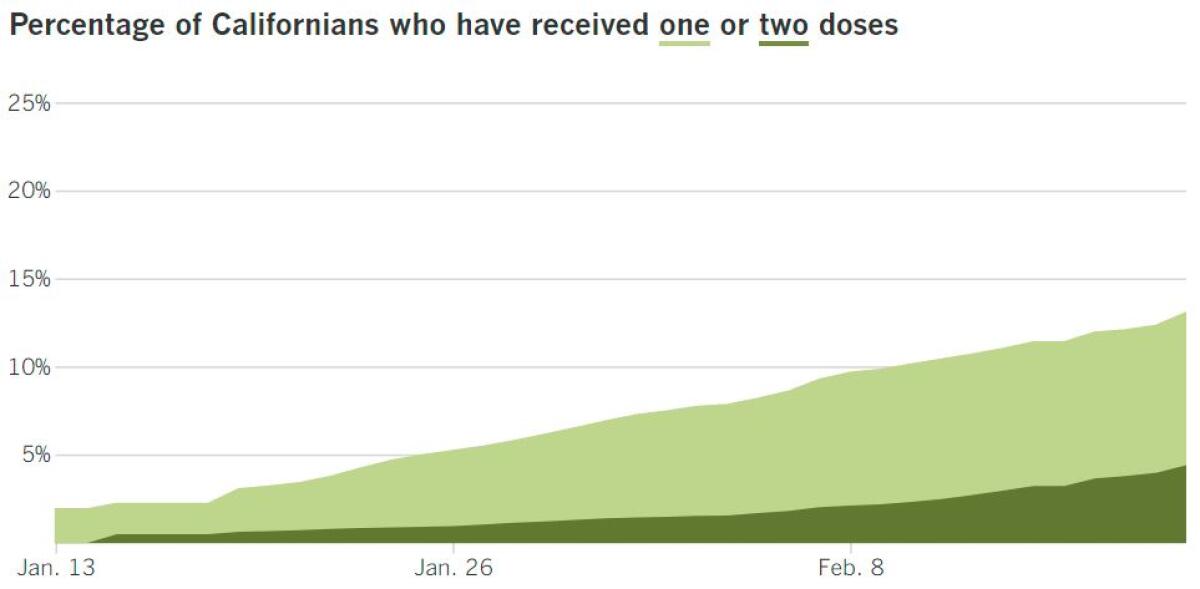
See the current status of California’s reopening, county by county, with our tracker.
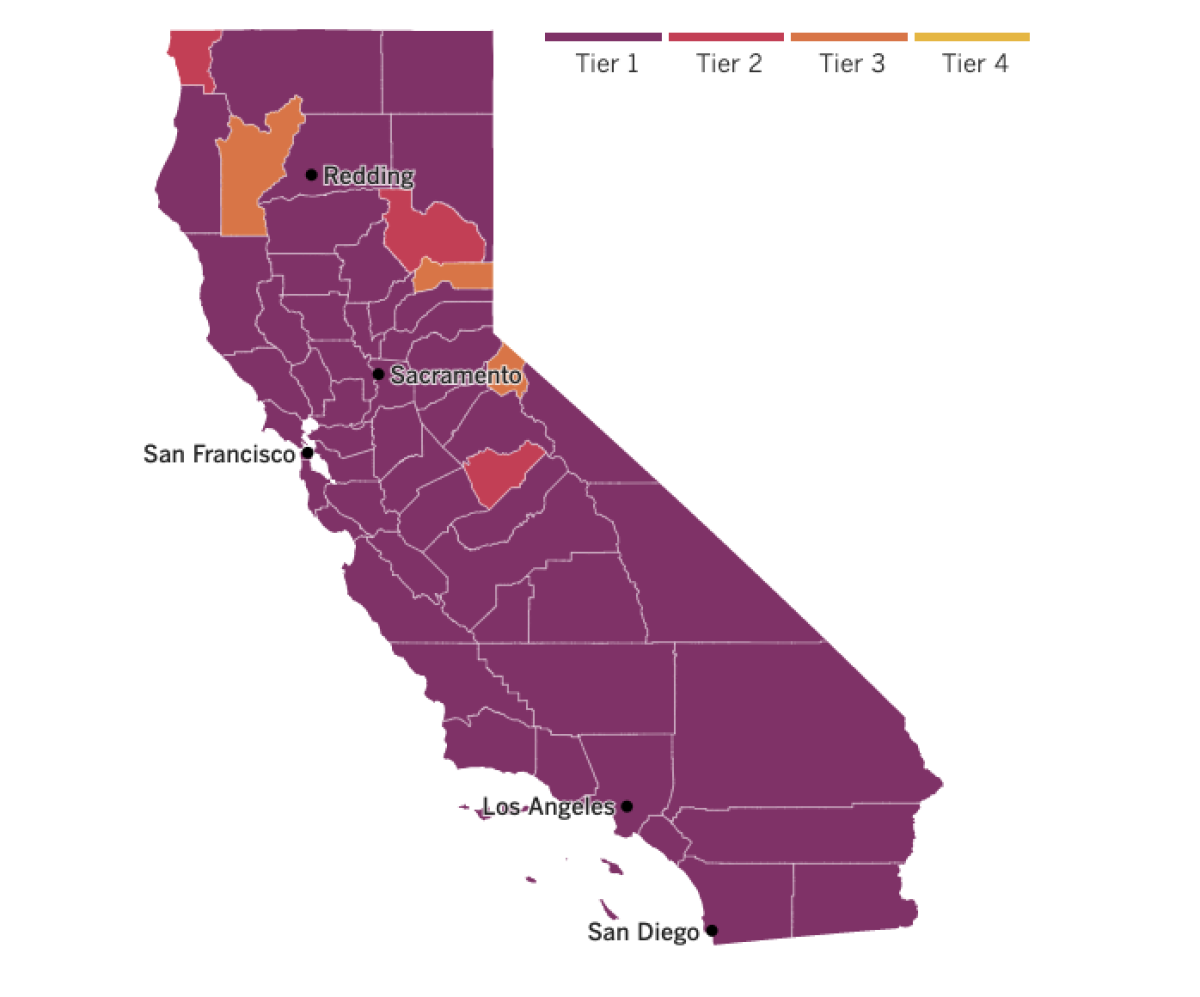

What to read this weekend
Life and death rests on ‘el tubo’
They call it el tubo, and it haunts the Latino-majority neighborhoods of South Los Angeles that have been hit harder by COVID-19 than almost anywhere in the U.S.
Intubation has become more than a medical procedure during the pandemic. It represents a crossroads: the moment patients must decide whether to have a tube inserted into their trachea so a machine can take over their breathing.
My colleague Joe Mozingo introduced us to two patients who faced the difficult decision: 30-year-old father Gilbert Torres and 57-year-old grandfather Mariano Zuñiga-Anaya. Their rooms were four doors away from each other at the Martin Luther King Jr. Community Hospital.
Tears streamed down Torres’ cheeks as he spoke with his girlfriend on video chat before his procedure. He didn’t want to die, he said.
Zuñiga and his family tried to avoid it. His older brother died in May on a ventilator in Mexico.
As Zuñiga’s condition worsened, doctors confirmed whether he wanted to use the ventilator. After he refused, Mozingo asked why.
“For fear,” Zuñiga said. “Nothing else.”
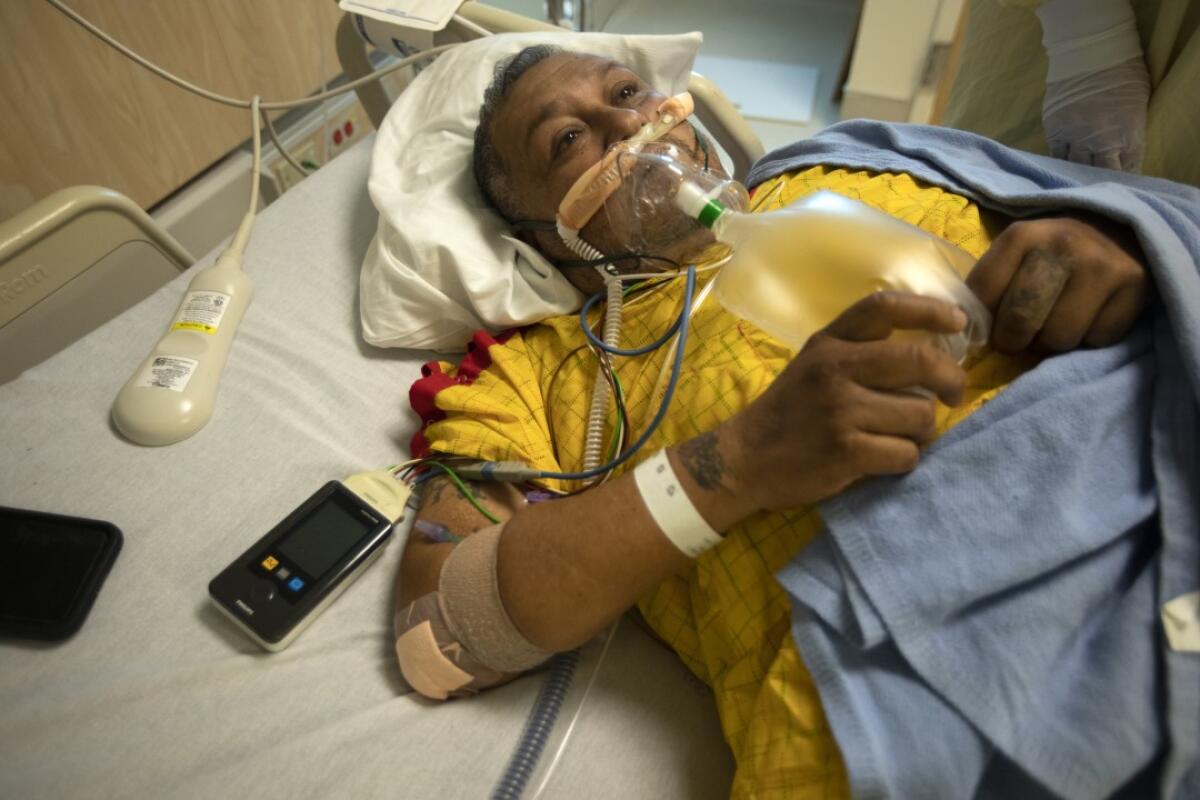
‘You are not alone’
Kat Cheng didn’t know who she was writing to, but she knew her letter was going to a friend.
The 36-year-old photographer, who was diagnosed with breast cancer in 2019, was one of 13 cancer survivors who wrote letters to first-time chemotherapy patients through a novel program at UCLA.
My colleague Deborah Netburn reported on the program that developed after Sydney Siegel, a social worker at the Simms/Mann-UCLA Center for Integrative Oncology, learned COVID-19 restrictions prevented chemotherapy patients from bringing visitors to treatment. She wanted to find a way to fill the void of support. Letters were a “precious gift,” she said.
When new patients checked in for their first treatment, they received a packet of information about the drugs they were about to receive and a stack of letters from people who had already gone through the same process.
The letters included inspiring messages, sympathetic advice and even song recommendations.
“Hey there friend,” Cheng began her letter. “Though you’re in unenviably unique circumstances, you are not alone.”
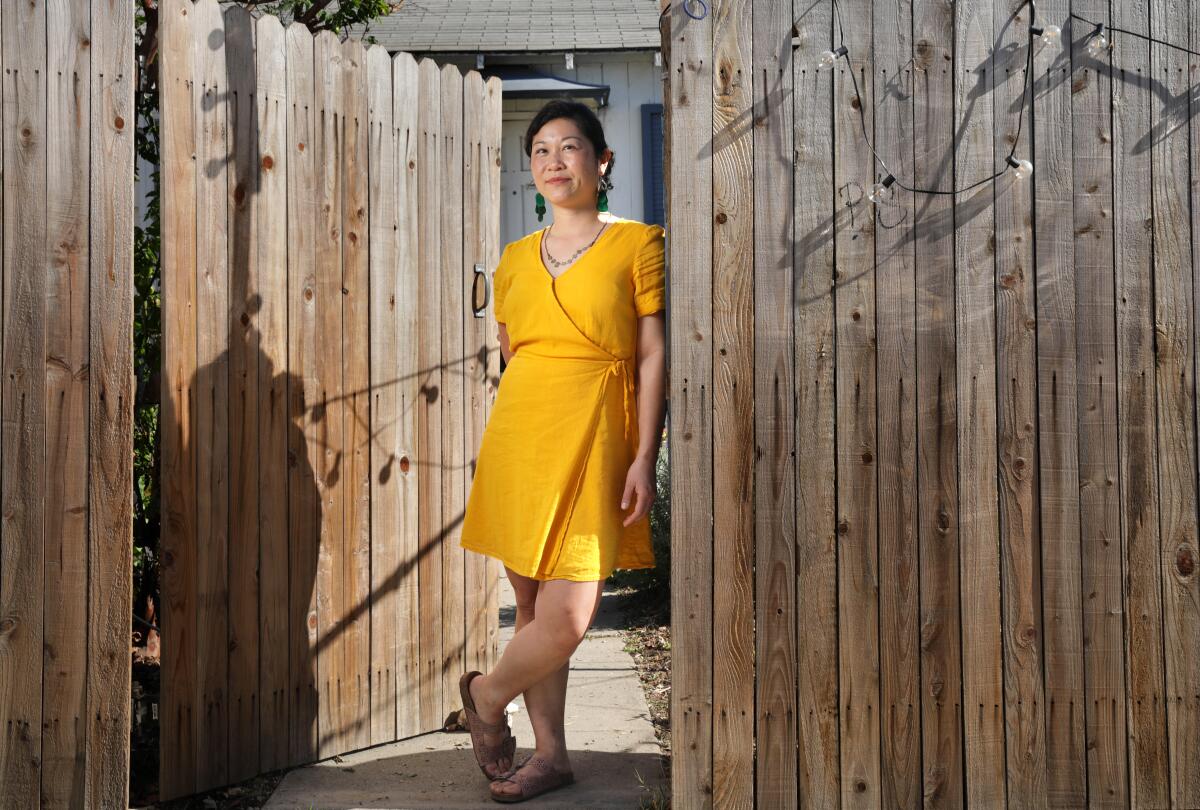
A young priest leads his diocese forward
Religious services have been at the center of many discussions related to lockdowns in the United States. The indoor gatherings can easily turn into superspreader events. But communities need spiritual comfort more than ever.
Priests in Nezahualcóyotl, Mexico, answered their community’s needs by continuing to baptize babies, hearing confession and praying with the sick. And they also paid the price: Four of them died of COVID-19.
So 30-year-old Julio César Ponce tried to steer the Catholic diocese forward. He asked God for answers: “How can we protect ourselves but also be present?”
He found his answer in technology, my colleague Kate Linthicum explained. The first Zoom meetings were awkward as Ponce tried to set up virtual Mass for different parishes. When the colleagues met for the first time, a priest accidentally pointed the camera at a painting of the Last Supper behind him instead showing his face. Another appeared on screen only as his avatar — a picture of Jesus.
Soon the priests, many of them in their 60s and 70s, got the hang of things. Now they scribble notes about how to use Instagram, Twitter and TikTok.
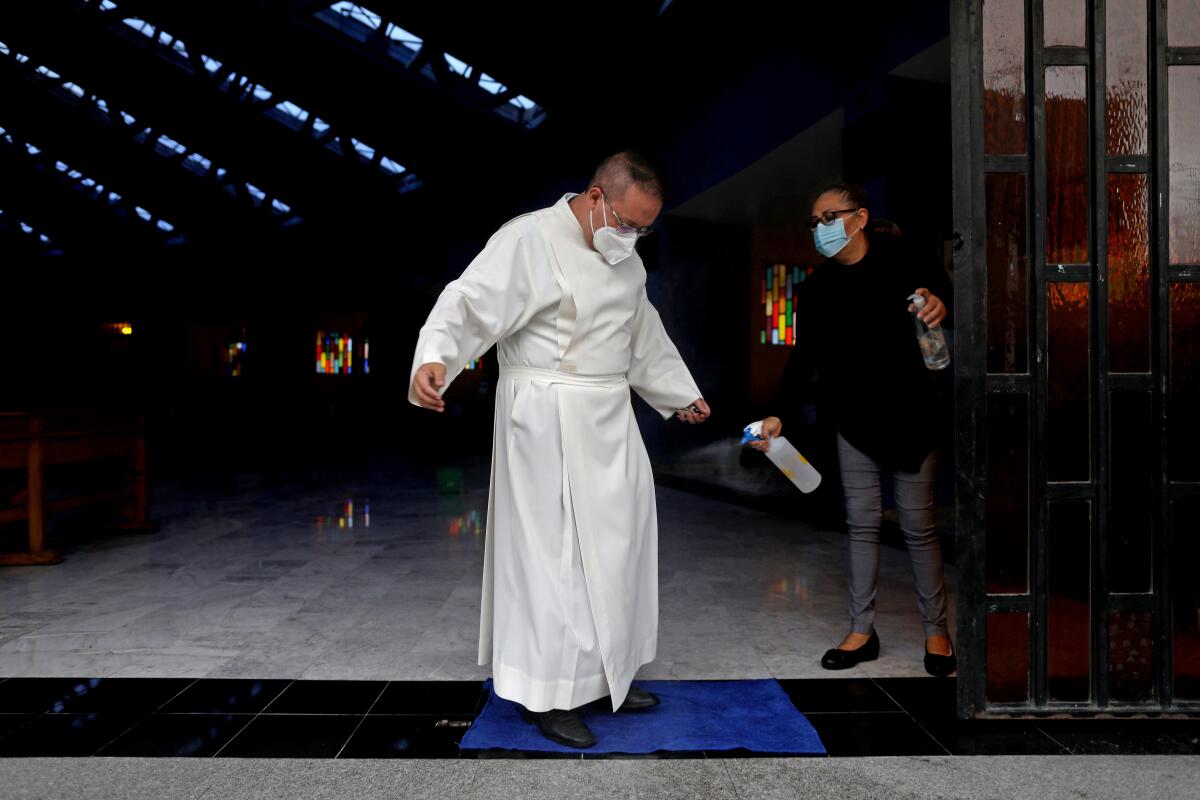
Grieving through grassroots memorials
One paper crane, meticulously shaped through a 24-fold process, symbolizes one life lost to COVID-19.
Then Karla Funderburk calculated that it would take her 29 years to fold enough cranes to keep up with the rising death toll. So the L.A. art gallery owner sought help via social media and received more than 60,000 cranes from 45 states and nine countries. What had started as a nightly ritual became a global effort to memorialize COVID-19 victims.
“I think just collectively mourning and acknowledging it provides a level of healing that is hard to translate into words,” said Funderburk, whose first installation was just shy of 8,000 cranes.
It’s one of several grassroots memorials described by my colleague Alex Wigglesworth. Many began as simple ways for individuals to process grief during the pandemic. But when death tolls skyrocketed, the task of memorializing each person became “almost Sisyphean,” said L.A. artist Marcos Lutyens, who wanted to mark every U.S. death with a red felt rose.
Madeleine Fugate, a 14-year-old from Studio City, hopes to honor each person who has died of COVID-19 in the U.S. by adding a square to an ever-growing quilt.
“There’s no set finish line,” Madeleine said. “It’s just going to keep on going until we get everyone.”
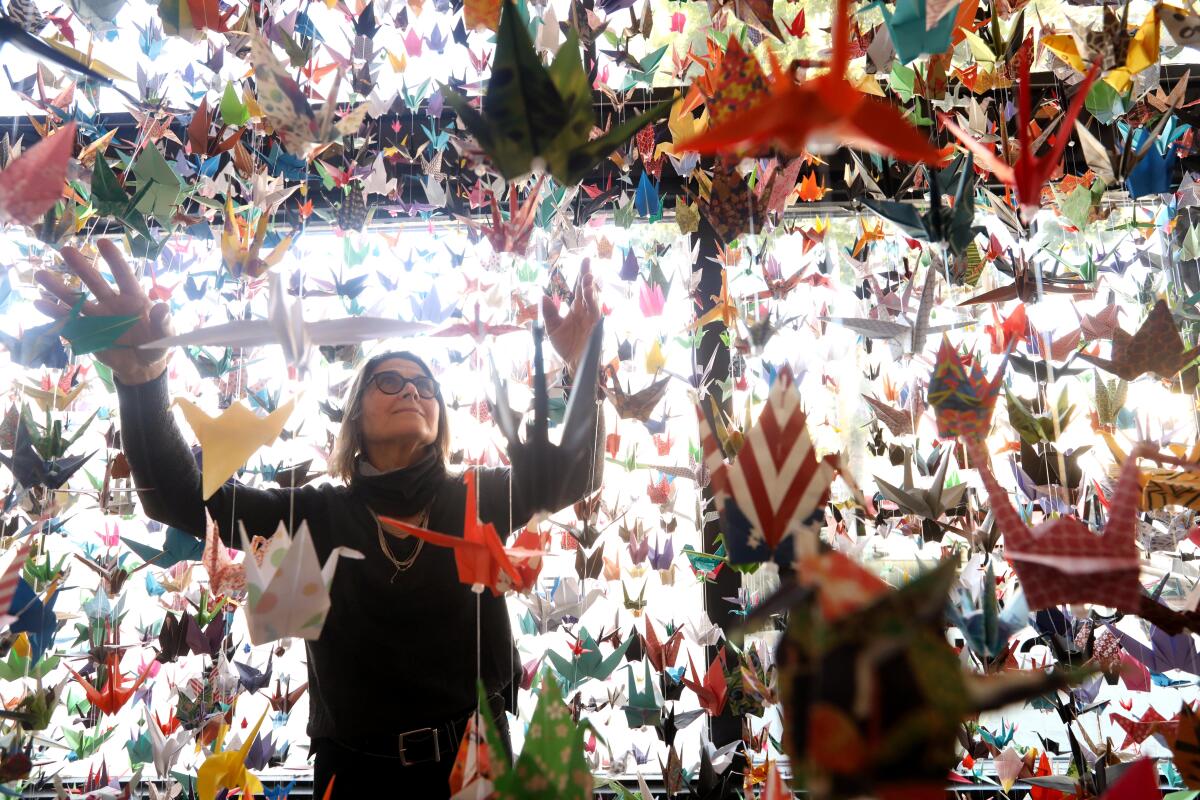
Stories for another time
One day the pandemic will be over. One day we will look back and tell stories to people who didn’t quarantine for months, stalk grocery stores for toilet paper and live in fear of catching the coronavirus.
That day seems both close and far away at the same time. But when it arrives, the Los Angeles Public Library hopes to greet it with the perfect time capsule. The library is collecting materials — photos, letters, emails, journal pages, blog posts and art — that can tell the complex story of pandemic L.A.
My colleague Nita Lelyveld got a peak at the L.A. COVID-19 Community Archive, which had more than 2,000 submissions early this month. The collection includes watercolor paintings, crayon drawings and photos of sidewalk chalk art.
The library is seeking participation from all sorts of people from all sorts of backgrounds to build a collection as diverse as our city.
Your support helps us deliver the news that matters most.
What to do this weekend
Get to Griffith Park. Take a walk through the park while listening to a special soundtrack by sound artist Ellen Reid. The composer, who won a 2019 Pulitzer Prize for her debut opera, “prism,” geocoded her original music to exact locations in the park and made it available through the free “Ellen Reid Soundwalk” app. You can also get reacquainted with the animals at the L.A. Zoo, which has reopened for a second time during the pandemic. Capacity is capped at 2,400 people per day and up to 400 people per hour to allow for plenty of social distancing space on the 133-acre grounds. Subscribe to The Wild for more on the outdoors.
Watch something great. Our weekend culture watch list includes a glimpse at Clark Kent and Lois Lane living the simple life in his hometown of Smallville in “Superman & Lois,” a superhero drama set in the DC Arrowverse. And in his Indie Focus newsletter’s roundup of new movies, Mark Olsen highlights “Nomadland,” the story of a woman, played by Frances McDormand, who hits the road in a converted van after being widowed and discovers a group of self-styled nomads.
Eat something great. Viet Nguyen’s bowl of pho adorned with braised rib bones is the product of a 48-hour cooking process and represents the chef’s Vietnamese roots. Sign up for our Tasting Notes newsletter for more, including Taiwanese breakfast spots.
Go online. Here’s The Times’ guide to the internet for when you’re looking for information on self-care, feel like learning something new or interesting, or want to expand your entertainment horizons.The pandemic in pictures
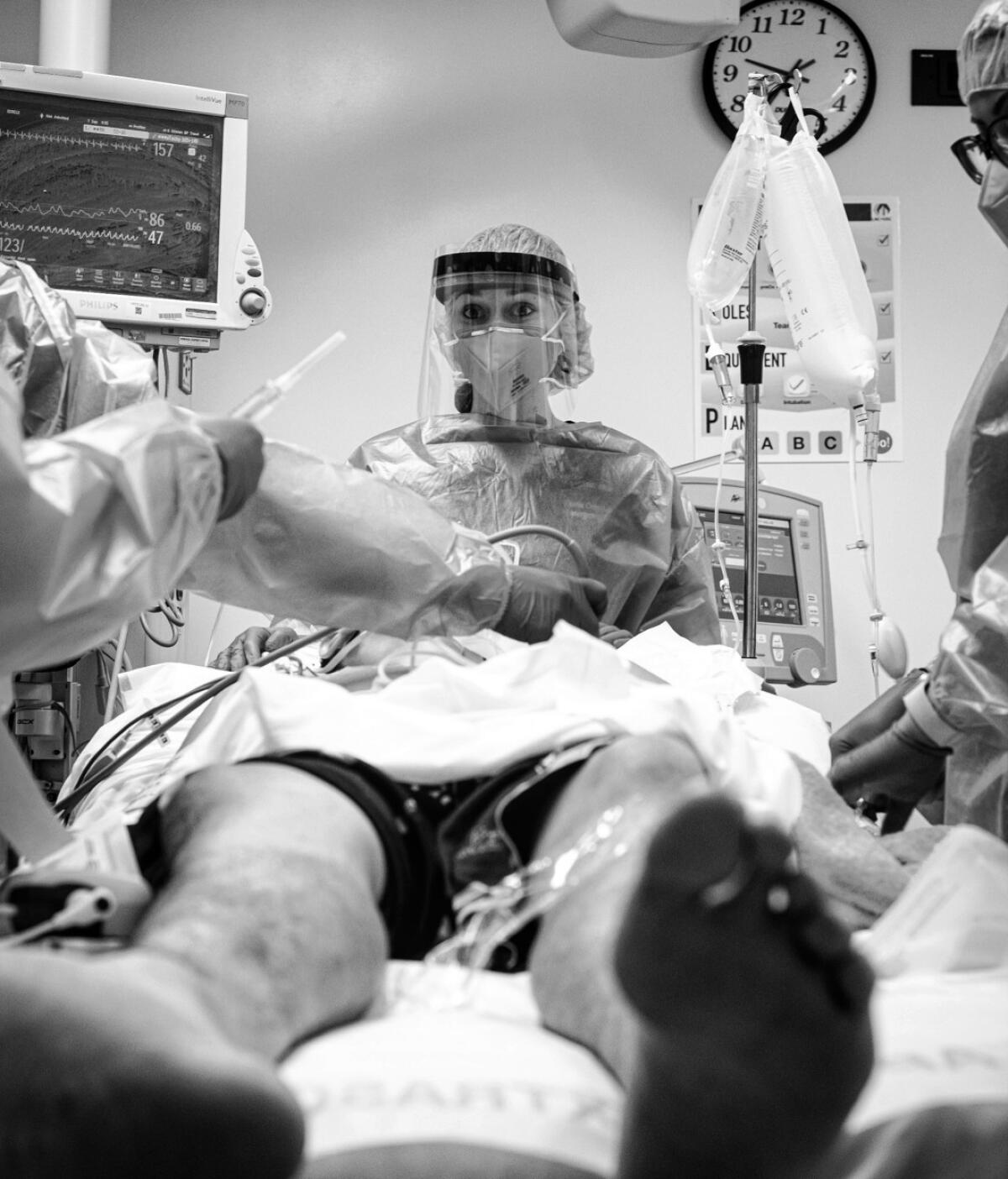
When Dr. Scott Kobner‘s friends and old medical school instructors started appearing on his television last spring as the pandemic devastated his home state of New York, he knew history was unfolding.
So the 29-year-old chief resident at the Los Angeles County-USC Medical Center’s Department of Emergency Medicine began showing up at the hospital on his days off with instruments that felt as vital as his stethoscope: his Leica M6 and M10 cameras.
Kobner is capturing images from the front lines of this once-in-a-century pandemic. The photos show the desperation in a doctor‘s eyes as she tried to resuscitate a patient. They also capture the moments of calm before another doctor intubated a patient.
Dr. Daria Osipchuk, who performed the intubation, said she was taken aback when she first saw Kobner’s photo of her wide eyes. “It was a little haunting,” she said. “In my eyes, I’m seeing that moment of calm right before the intubation and the gravity of the situation.”
Resources
Need a vaccine? Keep in mind that supplies are limited, and getting one can be a challenge. Sign up for email updates, check your eligibility and, if you’re eligible, make an appointment where you live: City of Los Angeles | Los Angeles County | Kern County | Orange County | Riverside County | San Bernardino County | San Diego County | San Luis Obispo County | Santa Barbara County | Ventura County
Practice social distancing using these tips, and wear a mask or two.
Watch for symptoms such as fever, cough, shortness of breath, chills, shaking with chills, muscle pain, headache, sore throat and loss of taste or smell. Here’s what to look for and when.
Need to get tested? Here’s where you can in L.A. County and around California.
Americans are hurting in many ways. We have advice for helping kids cope, resources for people experiencing domestic abuse and a newsletter to help you make ends meet.
We’ve answered hundreds of readers’ questions. Explore them in our archive here.
For our most up-to-date coverage, visit our homepage and our Health section, get our breaking news alerts, and follow us on Twitter and Instagram.



